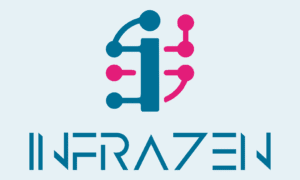Aligning your IT KPIs with business goals can boost customer satisfaction by 25% and cut IT-related costs by 20%. This guide explains how to choose, track, and manage IT KPIs effectively to ensure they drive measurable business success.
Key Takeaways:
- What IT KPIs Are: Metrics that link IT performance to business outcomes, such as system uptime improving customer retention.
- Problems of Poor Alignment: Misaligned KPIs waste resources, slow innovation, and hurt communication between IT and business teams.
- Steps to Align IT KPIs:
- Define clear business goals (e.g., reduce cart abandonment by 15%).
- Collaborate with stakeholders for alignment.
- Pick actionable and cost-efficient KPIs.
- Tools & Methods: Use frameworks like Balanced Scorecard or OKRs, and tools like Datadog for real-time tracking.
- Regular Reviews: Quarterly assessments and data-driven adjustments keep KPIs relevant.
By following these steps, businesses can improve efficiency, agility, and focus, ensuring IT efforts directly support their goals. Ready to dive deeper? Let’s explore how to apply these strategies effectively.
Key Steps to Align IT KPIs
To make sure IT metrics truly support business goals, it’s crucial to align them effectively. Research highlights that companies with aligned KPIs are twice as likely to lead their industries [3]. Here’s how to make it happen.
Setting Clear Business Goals
Start by defining measurable, prioritized objectives that align with your business strategy. For instance, a retail company might aim to “reduce cart abandonment by 15% within six months.”
| Goal Type | Example Metric | Business Impact |
|---|---|---|
| Customer Service | Response time | Improves satisfaction |
| Revenue Growth | Conversion rate | Boosts sales |
| Operational | System uptime | Enhances reliability |
| Security | Incident response time | Reduces risk |
Involving Key Decision Makers
Collaboration is essential. Bring in cross-departmental teams early on to ensure alignment. This is especially important since 70% of organizations face challenges with KPI alignment [3]. Regular reviews can make a difference. For example, a manufacturing company improved supply chain efficiency by 30% through monthly meetings involving IT, operations, and logistics [2].
Choosing the Right KPIs
Selecting the right metrics is key. A financial services firm, for example, saw a 20% increase in project approval rates after mapping KPIs effectively [1][2].
Focus on KPIs that are:
- Tied to business goals
- Measurable
- Actionable
- Relevant to stakeholders
- Cost-efficient to track
For cybersecurity-focused companies, useful KPIs might include “mean time to detect incidents” or “percentage of systems with updated security patches” [1][6]. Smaller businesses can benefit from starting small. One e-commerce company improved efficiency by 40% using just three metrics: uptime, page speed, and cart abandonment [1][6].
Once you’ve chosen your KPIs, the next step is implementing tools to track and manage them efficiently – more on that to come.
Methods and Tools for KPI Management
Once you’ve collaborated with stakeholders to set aligned KPIs, the next step is implementing systems to manage them effectively. Structured methods and specialized tools are essential for maintaining their strategic importance. Organizations using standardized processes often see a 30% boost in achieving their goals [1].
KPI Planning Methods
There are several frameworks available to help align IT KPIs with business goals. Here’s a quick comparison:
| Method | Best For | Key Benefits | Limitations |
|---|---|---|---|
| Balanced Scorecard | Strategic alignment | Covers all business areas | Can be complex to set up |
| SMART Framework | Tactical execution | Delivers clear, measurable results | May overlook broader strategies |
| OKR System | Quick iterations | Keeps focus simple and sharp | Risk of oversimplifying IT demands |
The Balanced Scorecard stands out for connecting IT metrics with business outcomes, making it a strong choice for strategic alignment.
KPI Tracking Software
Modern tools for KPI tracking simplify real-time monitoring and cross-departmental collaboration. These platforms often include:
- Executive dashboards to translate technical data into actionable insights
- System integration to unify data across platforms
- Automated alerts to flag thresholds or anomalies
Platforms like Datadog and New Relic excel in these areas, offering features that help measure ROI and track performance improvements over time.
InfraZen‘s ZenCore Fusion Service
For small businesses in North East England, InfraZen’s ZenCore Fusion service provides a tailored approach to IT KPI alignment. It includes:
- Strategic IT assessments that connect infrastructure with business goals
- Custom dashboards for real-time KPI tracking
- Predictive tools to prevent outages
- Regular reviews to ensure continuous alignment
The right combination of methods and tools depends on your business size and goals. Start by focusing on metrics tied to key priorities like cost management or customer retention. This groundwork will support the steps discussed in the next section.
Setting Up and Managing IT KPIs
Small businesses need a structured approach to establish and maintain effective IT KPI tracking. Here’s a breakdown of the key steps for managing KPIs successfully.
How to Set Up KPIs
Use an impact/effort analysis to prioritize your KPIs:
| Impact Level | Effort Required | Example KPIs | Implementation Priority |
|---|---|---|---|
| High | High | Security compliance | Planned phases |
| Low | Low | Software updates, Ticket volume | As needed |
| Low | High | Detailed cost analysis, Complex integrations | Defer or eliminate |
This method keeps your team focused on the most critical metrics without overburdening resources.
Reviewing KPIs Regularly
To ensure your KPIs stay relevant, consistent monitoring and adjustments are essential. Surprisingly, only 40% of organizations regularly review their IT KPIs [6], which can lead to outdated or misaligned metrics. Here are some proven practices for regular reviews:
- Quarterly Assessment Meetings: Schedule dedicated meetings to review KPI performance and check alignment with business objectives. Include stakeholders from IT and business units for well-rounded feedback.
- Data-Driven Adjustments: Look at trends and external factors, like market changes or new regulations, to guide updates. Keep a record of these influences for future reference.
Common KPI Mistakes to Watch Out For
Avoiding common errors can save time and resources. Here are some of the biggest mistakes and how to fix them:
- Tracking Too Many Metrics: About 68% of organizations monitor more than 10 KPIs [6], which can dilute focus. Stick to a smaller set of high-impact indicators instead.
- Ignoring Context: Don’t analyze KPIs in isolation. Always consider related metrics and external factors to get the full picture.
- Keeping Static Metrics: As your business goals evolve, your KPIs should too. Failing to update them can lead to misalignment.
To make KPI tracking part of your team’s routine, use automated tools for data collection and dashboards tailored to specific roles. This creates a culture where decisions are guided by data every day.
These practices lay the groundwork for customizing KPIs to fit your business needs – a topic we’ll dive into next, focusing on different industries.
sbb-itb-70a39e2
KPIs for Different Business Types
Choosing the right KPIs for your business ensures you’re focusing on what truly matters. Here’s how creative and training companies can track their performance more effectively.
KPIs for Creative Businesses
For creative companies, protecting intellectual property and ensuring system reliability are key priorities. In fact, 60% of creative businesses rank data security as their top IT concern [1].
| KPI Category | Key Metrics | Target |
|---|---|---|
| Data Security | Breach Incidents, DRM Success | Zero monthly breaches |
| System Performance | Uptime, Backup Success Rate | 99.9% uptime |
| Resource Access | MTTR (Mean Time to Repair), File Encryption Rate | <30 min MTTR |
A great example of success is Pixelcraft Studios. By focusing on these KPIs, they cut security incidents by 75% and maintained 99.9% system uptime [6].
KPIs for Training Companies
Training companies need metrics that balance ease of access to learning platforms with cost efficiency. Companies aligning their IT KPIs with business goals have seen a 25% boost in productivity [5].
Key metrics to track:
- Platform Performance: Measure LMS uptime and response times.
- Resource Accessibility: Monitor how quickly users can access training materials.
- Cost Efficiency: Evaluate IT costs per user and software license utilization.
For example, aiming for 99.9% LMS uptime ensures consistent platform access, while keeping resource access times under 30 seconds improves productivity. Additionally, achieving 95% license utilization helps control software expenses.
How InfraZen Supports Local SMEs
For small and medium-sized businesses, MSPs like InfraZen tailor global KPI strategies to fit local needs. This approach works especially well for regions like North East England, where businesses often face unique challenges.
Clients working with InfraZen have reported 30% faster incident response times thanks to their customized KPI strategies [6].
Conclusion
Key Points Review
Aligning your IT KPIs with business goals can directly influence outcomes. Here’s a quick breakdown of the three main pillars, supported by examples from retail and manufacturing industries:
| Pillar | Core Components | Impact |
|---|---|---|
| Strategic Alignment | Mapping business goals, Involving stakeholders | Maximized resource use |
| Measurement Framework | Selecting critical KPIs, Regular reviews | Improved focus on priorities |
| Implementation Process | Overseeing cross-functional efforts, Flexible tracking | Reduced duplication of metrics |
Action Steps
If you’re looking to refine your IT KPI strategy, here’s how to get started:
1. Conduct a KPI Audit
Review your current IT metrics carefully. Identify and remove unnecessary measurements to sharpen your focus on key objectives.
2. Establish Your Framework
Set up a structured monitoring process that includes:
- Quarterly reviews for short-term alignment
- Annual assessments to stay in sync with long-term goals
3. Implement Tracking Systems
Pick tools that suit your business size. Smaller companies can begin with simpler solutions, while larger organizations might need specialized KPI management platforms.
Achieving strong IT KPI alignment is an ongoing process. Regular refinement ensures your metrics stay relevant and actionable. For businesses in North East England, partnering with experienced MSPs like InfraZen can help you maintain effective alignment while adapting to local market demands. This collaborative approach keeps your IT strategy aligned as your business grows and evolves.
FAQs
Here are answers to some common questions about tackling challenges in IT KPI alignment:
What is KPI alignment and how do I verify it?
KPI alignment means ensuring your IT metrics directly reflect progress toward business goals. A good example is when a 1% increase in system uptime leads to a 0.8% boost in customer satisfaction[7].
| Business Goal | Aligned IT KPI | Measurable Impact |
|---|---|---|
| Customer Satisfaction | System Uptime | 1% uptime increase = 0.8% satisfaction boost[7] |
| Sales Growth | Website Performance | Faster page load times improve conversions |
| Operational Efficiency | Automation Metrics | Time savings through streamlined processes |
What’s the biggest mistake in KPI alignment?
The most common issue is focusing too much on technical metrics, like system stats, instead of tying them to business outcomes[1][8].
How often should we review our KPIs?
It’s generally recommended to review KPIs every quarter to ensure they remain relevant and aligned with business needs[4][8].
Can small businesses achieve effective KPI alignment?
Yes, they can. Start by focusing on 3-5 key metrics, use cloud-based tracking tools, and consider working with Managed Service Providers (MSPs) like InfraZen to simplify the process.
“Aligned IT departments report 2.5x higher effectiveness[4]“
For more insights, check out our discussion on InfraZen’s tailored solutions for small and medium-sized enterprises.

